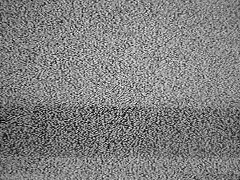 Dark Side of the Rainbow (also known as Dark Side of Oz or The Wizard of Floyd) refers to the pairing of the 1973 Pink Floyd music album The Dark Side of the Moon with the visual portion of the 1939 film The Wizard of Oz. This produces moments where the film and the album appear to correspond with each other. The title of the music video-like experience comes from a combination of the album title and the film's song "Over the Rainbow". Band members and others involved in the making of the album state that any relationship between the two works of art is merely a coincidence.
Dark Side of the Rainbow (also known as Dark Side of Oz or The Wizard of Floyd) refers to the pairing of the 1973 Pink Floyd music album The Dark Side of the Moon with the visual portion of the 1939 film The Wizard of Oz. This produces moments where the film and the album appear to correspond with each other. The title of the music video-like experience comes from a combination of the album title and the film's song "Over the Rainbow". Band members and others involved in the making of the album state that any relationship between the two works of art is merely a coincidence.In August 1995, the Fort Wayne Journal Gazette published the first mainstream media article about the "synchronicity", citing alt.music.pink-floyd. Soon afterward, several fans began creating websites in which they touted the experience and tried to comprehensively catalogue the corresponding moments. A second wave of awareness began in April 1997 when Boston radio DJ George Taylor Morris discussed Dark Side of the Rainbow on the air, leading to further mainstream media articles and a segment on MTV news.
In July 2000, the cable channel Turner Classic Movies aired a version of Oz with the Dark Side album as an alternate soundtrack. Turner Entertainment has owned the rights to the film since 1986.
 Fans have compiled more than one hundred moments of perceived interplay between the film and album, including further links that occur if the album is repeated through the entire film. Examples include music changes at dramatic moments, and thematic alignment such as the scarecrow dance during "Brain Damage". This synergy effect has been described as an example of synchronicity, defined by the psychologist Carl Jung as a phenomenon in which coincidental events "seem related but are not explained by conventional mechanisms of causality."Detractors argue that the phenomenon is the result of the mind's tendency to think it recognizes patterns amid disorder by discarding data that do not fit. Psychologists refer to this tendency as apophenia. Under this theory, a Dark Side of the Rainbow enthusiast will focus on matching moments while ignoring the greater number of instances where the film and the album do not correspond. Another theory suggests the correspondence may have been assisted by the synaesthetic effects of narcotics taken by those who then chose to enjoy the album and the film together (that is to say, the only reason they think the two match is because they're under the influence of drugs).
Fans have compiled more than one hundred moments of perceived interplay between the film and album, including further links that occur if the album is repeated through the entire film. Examples include music changes at dramatic moments, and thematic alignment such as the scarecrow dance during "Brain Damage". This synergy effect has been described as an example of synchronicity, defined by the psychologist Carl Jung as a phenomenon in which coincidental events "seem related but are not explained by conventional mechanisms of causality."Detractors argue that the phenomenon is the result of the mind's tendency to think it recognizes patterns amid disorder by discarding data that do not fit. Psychologists refer to this tendency as apophenia. Under this theory, a Dark Side of the Rainbow enthusiast will focus on matching moments while ignoring the greater number of instances where the film and the album do not correspond. Another theory suggests the correspondence may have been assisted by the synaesthetic effects of narcotics taken by those who then chose to enjoy the album and the film together (that is to say, the only reason they think the two match is because they're under the influence of drugs).Download links: 1 2 3 4 5 6 7 8 or TORRENT












